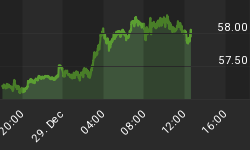The S&P 500 equity index is down nearly 15% from its peak as I write this article. The incredible volatility can be nauseating for even the most even-tempered investor. It's enough to drive many people to pull most, if not all, of their money out of stocks and put it into less risky investments. Basically it's 2008 all over again.
While it's completely understandable that many are fed up with the stock market swinging wildly based on Federal Reserve and government intervention as well as market rumors, it is important to understand that a lot has changed since 2008 in terms of the risk profile of other investments. Money market funds, although yielding less than 0.5% on average, are actually much riskier than most might think today.
In 2008 the federal government decided to guarantee all money market funds after one of the largest of them, the Reserve Primary Fund, was in danger of losing customers' money. Money market funds are supposed to never lose principal. Put another way, the Net Asset Value (NAV) is never supposed to go below $1 a share. This is called "breaking the buck" in the finance field and it had never happened in the history of the mutual fund industry; until 2008. The Reserve Primary Fund had invested in Lehman Brothers debt and was therefore about to take a huge hit. That's when the feds stepped in and guaranteed that no money market fund would break the buck.
Money market funds are no longer guaranteed, yet it is clear that mutual fund companies and portfolio managers believe that the feds will step in once again and bail them out if another financial collapse is imminent. This is called moral hazard and has been widely cited as being the most dangerous part of all the bailouts that occurred in 2008 and 2009. Moral hazard increases the risk that these companies will take because they feel that if things go awry, the taxpayer will bail them out.
As an example of this risk taking, half of the assets in prime money market funds are now invested in European banks, according to Fitch Ratings. Yes, these are the same banks that are being held together by the equivalent of bailing wire and chewing gum by the European Central Bank and the wealthier countries in Europe. It requires a new bailout nearly every month to keep the European banking system solvent.
It is also important to point out that the NAV of $1 is a total charade. The NAV of a money market fund in no way accurately reflects the true value of the fund itself. The NAV of money market funds should be allowed to float like any mutual fund. Instead, by law it is set to $1, which is confusing at best, fraudulent at worst. An NAV of $1 for money market funds is the Maginot Line of investing. It looks good and seems like a great defense, but in the end it could all just be a weak façade.
So what is an investor to do these days? If you are losing sleep at night because of your equity holdings, then in my opinion you have too much money in stocks. Nobody should lose sleep over their investments. But it isn't as simple as just transferring money directly to a bond or money market fund. When it comes to any fund, it is important to look at each and every holding that the fund contains. Look at the issuer and the credit rating. Make sure you know the country of origin. If wanting only to preserve principal in times such as these, simply invest in a very short-term 100% U.S. treasury fund. The yield is nearly 0%, but it is one of the safest bets there is currently.
















